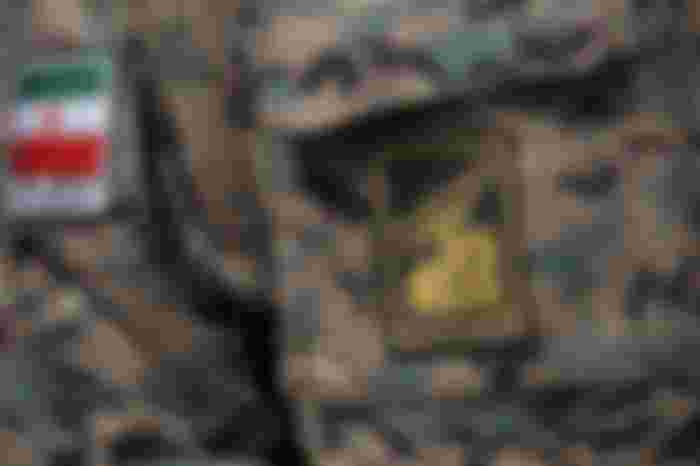
Retired Marine Lt. Gen. Vincent Stewart left his post as the No. 2 at US Cyber Command in 2019, ending a decorated four-decade career. Toward the end of it, he spent his time at the forefront of the military intelligence and cybersecurity communities.
If anyone has the most up-to-date information on how Iran may fight the US, then, it’s Stewart.
“The Iranian strategy would be to avoid, where possible, direct conventional force-on-force operations,” he wrote for the Cipher Brief on July 2, 2019. “They would attempt to impose cost on a global scale, striking at US interests through cyber operations and targeted terrorism with the intent of expanding the conflict, while encouraging the international community to restrain America’s actions.”
In other words, Tehran can’t match Washington’s firepower. But it can spread chaos in the Middle East and around the world, hoping that a war-weary US public, an intervention-skeptical president, and an angered international community cause America to stand down.
That may seem like a huge task — and it is — but experts believe the Islamic Republic has the capability, knowhow, and will to pull off such an ambitious campaign. “The Iranians can escalate the situation in a lot of different ways and in a lot of different places,” Hanna told me. “They have the capacity to do a lot of damage.”
Take what it could do in the Middle East. Iran’s vast network of proxies and elite units — like Soleimani’s Islamic Revolutionary Guard Corps — could be activated to kill American troops, diplomats, and citizens throughout the region. US troops in Syria are poorly defended and have little support, making them easy targets, experts say. America also has thousands of civilians, troops, and contractors in Iraq, many of whom work in areas near where Iranian militias operate within the country.
US allies would also be prime targets. Hezbollah, an Iran-backed terrorist group in Lebanon, might attack Israel with rockets and start its own brutal fight. We’ve heard this story before: In 2006, they battled in a month-long war where the militant group fired more than 4,000 rockets into Israel, and Israeli forces fired around 7,000 bombs and missiles into Lebanon.
About 160 Israelis troops and civilians died, according to the Israel Ministry of Foreign Affairs, and about 1,100 Lebanese — most of them civilians — perished, per Human Rights Watch, a US-headquartered advocacy organization. It also reports about 4,400 Lebanese were injured, and around 1 million people were displaced.
But that’s not all. Iran could encourage terrorist organizations or other proxies to strike inside Saudi Arabia, the United Arab Emirates, and other Gulf nations. Last year, it planned and executed drone strikes on two major Saudi oil facilitiesdeep inside the kingdom, convulsing world markets. Its support for Houthis rebels in Yemen would mostly certainly increase, offering them more weapons and funds to attack Saudi Arabia’s airports, military bases, and energy plants.
Experts note that the Islamic Republic likely has sleeper cells in Europe and Latin America, and they could resurface in dramatic and violent ways. In 1994, for example, Iranian-linked terrorists bombed the hub of the Jewish community in Argentina’s capital, Buenos Aires, killing 85 people and injuring roughly 300 more.
That remains the largest terrorist attack in Latin America’s history, and the possibility for an even bigger one exists. In 2018, Argentina arrested two men suspected of having ties with Hezbollah.
But Chris Musselman, formerly the National Security Council’s counterterrorism director under Trump, told me the US and its allies may have the most trouble containing the proxy swarm in Western Africa.
“We could see a conflict that spread quickly to places the US may not be able to protect people, and it’s a fight that we are grossly unprepared for,” he said, adding that there’s a strong Hezbollah presence in the region and American embassy security there isn’t great. Making matters worse, he continued, the US isn’t particularly good at collecting intelligence there, meaning some militants could operate relatively under the radar.
“This isn’t really a law enforcement function that US can take on a global scale,” he said. It would require that countries unwittingly hosting proxies to lead on defeating the Iranian-linked fighters, with US support when needed.
The chaos would also extend into the cyber realm. Iran is a major threat to the US in cyberspace. Starting in 2011, Iran attacked more than 40 American banks, including JPMorgan Chase and Bank of America. The attack made it so the banks had trouble serving its customers and customers had trouble using the bank’s services.
In 2012, Iran released malware into the networks of Saudi Aramco, a major oil company, which erased documents, emails, and other files on around 75 percent of the company’s computers — replacing them with an image of a burning American flag.
In the middle of a war, one could imagine Tehran’s hackers wreaking even more havoc.
“I would expect them to have begun selected targeting through socially-engineered phishing activities focused on the oil and gas sector, the financial sector and the electric power grid in that order,” Stewart wrote. “There may be instances now where they already have some persistent access. If they do, I expect they would use it, or risk losing the access and employ that capability early in the escalation of the crisis.”
Recent reports indicate that Iranian cyberwarriors have stepped up their online operations, with a particular emphasis on preparing to attack US firms. Among other moves, they’re aiming to trick employees at major businesses to hand over passwords and other vital information, giving them greater access to a firm’s networks.
“When you combine this increase with past destructive attacks launched by Iranian-linked actors, we’re concerned enough about the potential for new destructive attacks to continue sounding the alarm,” Christopher Krebs, a top cybersecurity official at the Department of Homeland Security, told Foreign Policy last July.
All of this — proxies striking around the world, cyberattacks on enterprise — would happen while Iran continued to resist conventional American forces.
In the Strait of Hormuz, for instance, Iranian sailors could use speedboats to place bombs on oil tankers or place mines in the water to destroy US warships. The Islamic Republic’s submarines would also play a huge part in trying to sink an American vessel. And the nation’s anti-ship missiles and drones could prove constant and deadly nuisances.
Should US troops try to enter Iranian territory on land, Iranian ground forces would also push back on them fiercely using insurgent-like tactics while the US painfully marches toward Tehran.
Put together, Brewer notes succinctly, a US-Iran war would be “a nasty, brutal fight.”
Aftermath: “The worst-case scenarios here are quite serious” US-IRAN
